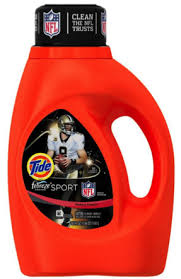Marketing articles often refer to the ubiquitous “she” consumer and shopper, simply assuming that men are not a factor in most shopping occasions.
Yet while women continue to do most of the shopping, spending more of their own money, men certainly are an active target market given evolving gender roles and the fact that more people today now live alone. While certain male-focused categories such as personal care—which is reaching $5-6 billion in spending—have developed over the last decade, it’s still common for men to be an under-served and untapped market. Some marketers are recognizing this outage and spending more time and marketing dollars focused on understanding what men want to get beyond the traditional women 18-65 year old consumer demographic.
Tide, for one, has developed he-focused products and advertising, acknowledging that men actually do laundry. With men’s role in the household evolving—from stay-at-home dads to men simply taking a more active role in the household and doing more chores—it makes sense to start to speak to him. Last year, Tide started to offer products with a football theme, partnering with New Orleans Saints quarterback Drew Brees and showcasing him on the front of pack (a la Wheaties) on Tide Plus Febreze Sport.

The football theme was also supported with ad campaigns that partnered and showcased the National Football League and teams, an obvious and smart association. Other campaigns have also brought dads doing laundry front and center. These campaigns prompted some male bloggers to speak up about finally being recognized, pleased to see that a company was acknowledging their new role and investing behind such campaigns.
While one might think chips would all be targeted towards men, the Ruffles brand was historically targeted to families. After much analysis, in the last year Frito Lay decided to reposition Ruffles to squarely target men. This new focus impacted the brand’s entire marketing mix. The company started with new product launches, such as its Ultimate (deeper ridges) and Max (male-inspired flavors) lines, specifically formulated with men’s preferences in mind. They complemented this with a new distribution strategy, one that focused on deepening presence in convenience stores where more men tend to shop on-the-go. They then rounded this out with a recently released “Ruff McThickridge” ad campaign that brings to life characters one might find in a 1970s action movie. This is a holistic and humorous campaign that finds these characters fighting for their coveted Ruffles chips.
Men-focused shopping continues to expand, as well, with the belief that by customizing the experience to this target alone, retailers can connect that much more deeply with men. Take the STORY store in New York, which re-invented itself for the summer, focusing solely on men. Renaming the shop, “HIS STORY,” the retail outlet brought together the best of men-targeted fashion and personal care products, with counsel from Details magazine, to guide men in what to buy to create their specific look. Even Procter & Gamble took part in a shaving station featuring Gillette, Braun, and Old Spice. The store also hosted male-themed events, again making the experience fully immersive to draw shoppers in.
Also in New York, J. Crew launched its “Liquor Store” to specifically target men, providing curated items just for him. Anthony Sperduti of Partners & Spade, which developed the concept for J. Crew, noted that this powerful retail concept allowed the company to re-brand itself to this male target. Bringing together a unique vibe in a non-traditional J. Crew environment made the space a destination. The company went so far as to write, “What A Man Should Know,” to not only provide men with tips and tools, but to also demonstrate its commitment to understanding men and their needs.
Marketers should consider two views—embrace the idea that perhaps their brands’ core target just might be men, or determine a way to bridge the gap and deliver gender-neutral marketing. It takes deep insight and thoughtfulness, however, to communicate to men in a way that’s genuine and not rote or stereotypical. If you want to target men, invest the time and resources to understand the best way to build strong connections.
About the Author
Kathy Oneto is an experienced brand marketer with over fifteen years of marketing and general business management experience. At Anthem, Kathy has led strategic engagements with clients such as Avery, Chevron, Diamond Foods, Peet’s Coffee & Tea, PetSmart, Safeway, and Seagate
